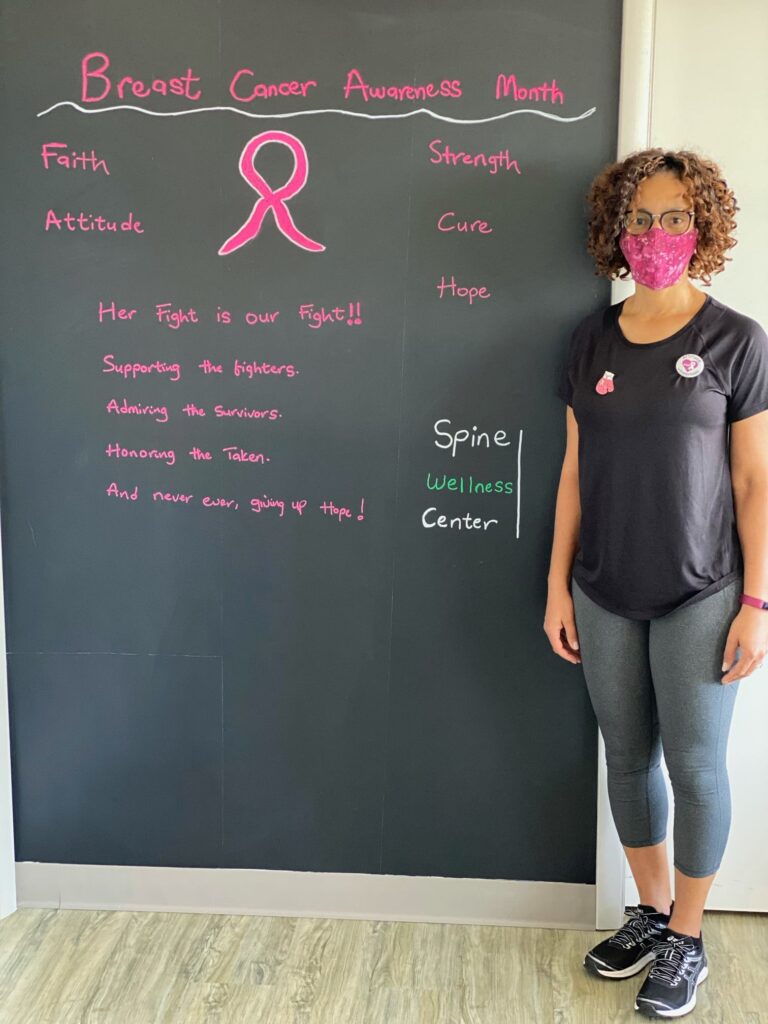Her Fight Is Our Fight – Breast Cancer Awareness
 October is Breast Cancer Awareness Month, which is the perfect month to share my story to promote the value of screening mammography.
October is Breast Cancer Awareness Month, which is the perfect month to share my story to promote the value of screening mammography.During my routine screening mammography in May 2015, the radiologist noticed changes in my left breast when compared to my previous images; some calcifications, which were not visible on prior mammograms. I was asked to return to the radiology center for a diagnostic mammogram to get a better view of the changes. The changes were not significant enough to warrant further testing at the time but the radiologist designated me for short term surveillance which meant I should return in 6 months for a diagnostic mammogram instead of waiting 1 year for my next routine screening.
When I received a diagnostic mammogram in November 2015, the calcifications were larger and the formation of the cells were more suspicious. I was scheduled for a biopsy to determine the nature of these calcifications, since certain breast cancers begin as calcifications. I had a biopsy in mid-December 2015. Three days before Christmas 2015, I received a call from the radiologist advising that I was diagnosed with DCIS – ductal carcinoma in situ. The calcifications were malignant. It is important to be aware that I did not have a tumor; no lumps were detected during self-breast exam nor physical breast exam by my physician.
My cancer was found extremely early because of a routine screening mammogram. Because my cancer was found early, I had time to undergo genetic testing to determine the best course of treatment, just not for now but for the future. I have a strong family history of breast cancer: my mother survived breast cancer twice and both of her sisters (my aunts) survived breast cancer. Fortunately, I did not inherit the breast cancer gene. In consultation with my doctor, I was able to make an informed decision about my treatment, based on science, not fear. My treatment consisted of a lumpectomy in February 2016 to remove the cancerous tissue and accelerated partial breast irradiation (APBI), a 5 day – 2x per day course of internal radiation targeted to the specific area of where the cancerous cells were removed to destroy any residual cancerous cells that may still be present, but undetectable.
Thus far, treatment has been successful. There has not been any indication of malignancy on any of my mammograms since December 2015. Early detection through a routine mammogram saved my life and spared me from having invasive, challenging, life-altering treatments. I strongly encourage women to prioritize preventive care by getting their mammograms as recommended by their personal physician. Don’t just save the ta-tas; save your life. If you face cancer, stay faithful and hopeful.
~Lauren Bennett
